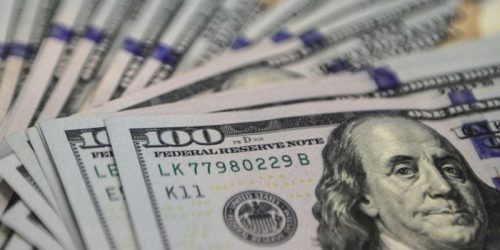KARACHI: The country paid over $7 billion in external debt servicing for the first half of fiscal year 2020-21 (1HFY21) which looks significantly higher when compared with the foreign exchange reserves of the State Bank of Pakistan (SBP).
The country paid $3.55bn in external debt servicing for the second quarter of the current fiscal (2QFY21) — slightly higher than first quarter (1QFY21) payment of $3.51bn, the central bank reported on Wednesday.
The cumulative two quarters (half year) payment as debt servicing reached $7.06bn, indicating that the total debt servicing could cross the $14bn figure at the end of FY21.
The country’s external account looks stable with the current account surplus of over $1bn and foreign exchange reserves hovering around $13bn since Nov 2020. The central bank’s reserves are used for servicing external debts.
However, the total external debts and liabilities have increased by 2.6pc to $115.76bn at the end of December 2020 compared to $112.79bn on June 30, 2020.
Pakistan paid $2.93bn as principal amount and $617 million as interest on external debts in 2QFY21, similar to the $2.93bn paid in 1QFY21.
Further details showed that the country paid $2.979bn as public debt servicing in 2QFY21. The public debt servicing included government debt servicing ($1.58bn), IMF ($34m) and foreign exchange liabilities ($1.06bn).
However, the external debt servicing of private sector debt has increased significantly. In 2QFY21, the country paid $52m – an increase of 87pc – as compared to $28m in 1QFY21.
The share of private sector external debt has been rising as it reached $11.26bn by end of Dec 2020 while it was $11.12bn in 1QFY21. In FY20, private sector external debt servicing was $2.00bn.
Current foreign exchange reserves of the SBP at $12.95bn are lower than the debt servicing of FY20 which was $14.58bn. The half-yearly external debt servicing shows the total for the fiscal year FY21 would be again more than $14bn.
The situation has yet not changed this year despite record remittances being sent by the overseas Pakistanis. The remittances during the first seven months of the current fiscal have reached $16.5bn; 24pc higher than the previous year’s inflow.
The country has been struggling to improve exports with a number of incentives, but the increase in exports proceeds did not show any significant improvement.
The huge outflow of over $14bn as external debt servicing forces the government to borrow more from all available sources including the commercial borrowing from international banks which cost heavily as their interest rates usually remain much higher than IMF and other donor agencies.
The calendar year data shows that the country’s total external debt and liabilities increased by $5.04bn to $115.58bn by end Dec 2020 compared to $110.72bn at the end of Dec 2019.





